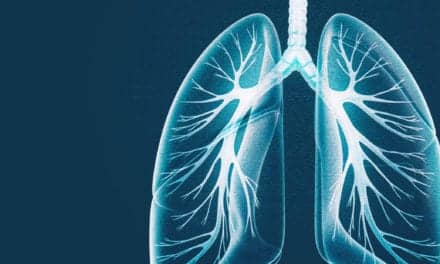Researchers have been unable to produce two theorized subphenotypes of COVID-19-related ARDS (acute respiratory distress syndrome), according to a study published in Annals of the American Thoracic Society.
Scientists previously proposed that two phenotypes exist that differentiate patients with more severe COVID-19 and indicate that they should be treated differently.
Lieuwe DJ Bos, MD, PhD, and co-authors report on a retrospective analysis of the first 38 patients with suspected COVID-19 who were admitted to the ICU of the Academic Medical Center of the University of Amsterdam, The Netherlands. CT scans were done shortly after these patients were intubated and before they were admitted to the ICU. The scans were analyzed and compared with each other to determine factors that might indicate different phenotypes of COVID-19 ARDS.
“Our finding was that most patients do not fulfill the criteria of one phenotype or the other,” said Dr. Bos, clinician and researcher in respiratory medicine and intensive care, Amsterdam University Medical Center. “I do not feel encouraged to spilt patients into the two proposed phenotypes to guide ventilator management, but rather treat patients with the uniform, high quality care that we always deliver to patients with lung injury.”
Some scientists have hypothesized that patients can either develop typical ARDS, which has recently been called “H type,” or that they develop “L type” ARDS.
- In H type, a patient’s lung collapses easily (high elastance) resulting in higher lung weight due to pulmonary edema, a condition in which the lungs fill with fluid. Blood flows through areas that are not ventilated (higher shunt) and collapsed lungs can be opened by using positive pressure ventilation.
- The “L” phenotype would have low elastance, which means lung tissue does not collapse easily, and because of this, the weight of the lung is low (normal) and most of the blood flows through areas where there is ventilation (low shunt). The problem in these patients might be that blood vessels in the lungs dysfunction.
Several steps have to be taken before subphenotype-targeted treatment can be put into clinical practice, the last step being a head-to-head comparison of subphenotype-directed treatment with standard of care in a randomized clinical trial. Before this step is taken, however, the basic assumptions underlying the subclassifications of patients must be validated. Dr. Bos and colleagues sought to invalidate this theory and hypothesized that patients with low elastance also show little consolidation on chest CT scan images – and vice versa.
The researchers performed CT scans right after intubation and before transport to the ICU. They estimated lung consolidation area for patients classified as having either an H- or L-phenotype, classified lung morphology as focal (back side of lung) or non-focal, and conducted a number of other calculations. They found that in patients with a non-focal lung morphology, lung weight and lower respiratory compliance were not related at all.
The authors stated: “Based on these preliminary data, we conclude that compliance and an estimation of lung weight do not correlate in patients with COVID-19 related ARDS. Most patients could not be classified as either ‘H’ or ‘L’ subphenotype, but showed mixed features. “The presented data are the first independent test of proposed subphenotypes of COVID-19 related ARDS and highlight that features of the H- and L-subphenotypes are not mutually exclusive. Simultaneously, we validated the existence of heterogeneity in lung morphology known from non-COVID-19 related ARDS. We need data-driven approaches to evaluate the existence of treatable traits to improve patient-centered care. Until these data become available, an evidence-based approach extrapolating data from ARDS not related to COVID-19 is the most reasonable approach for ICU care.”










